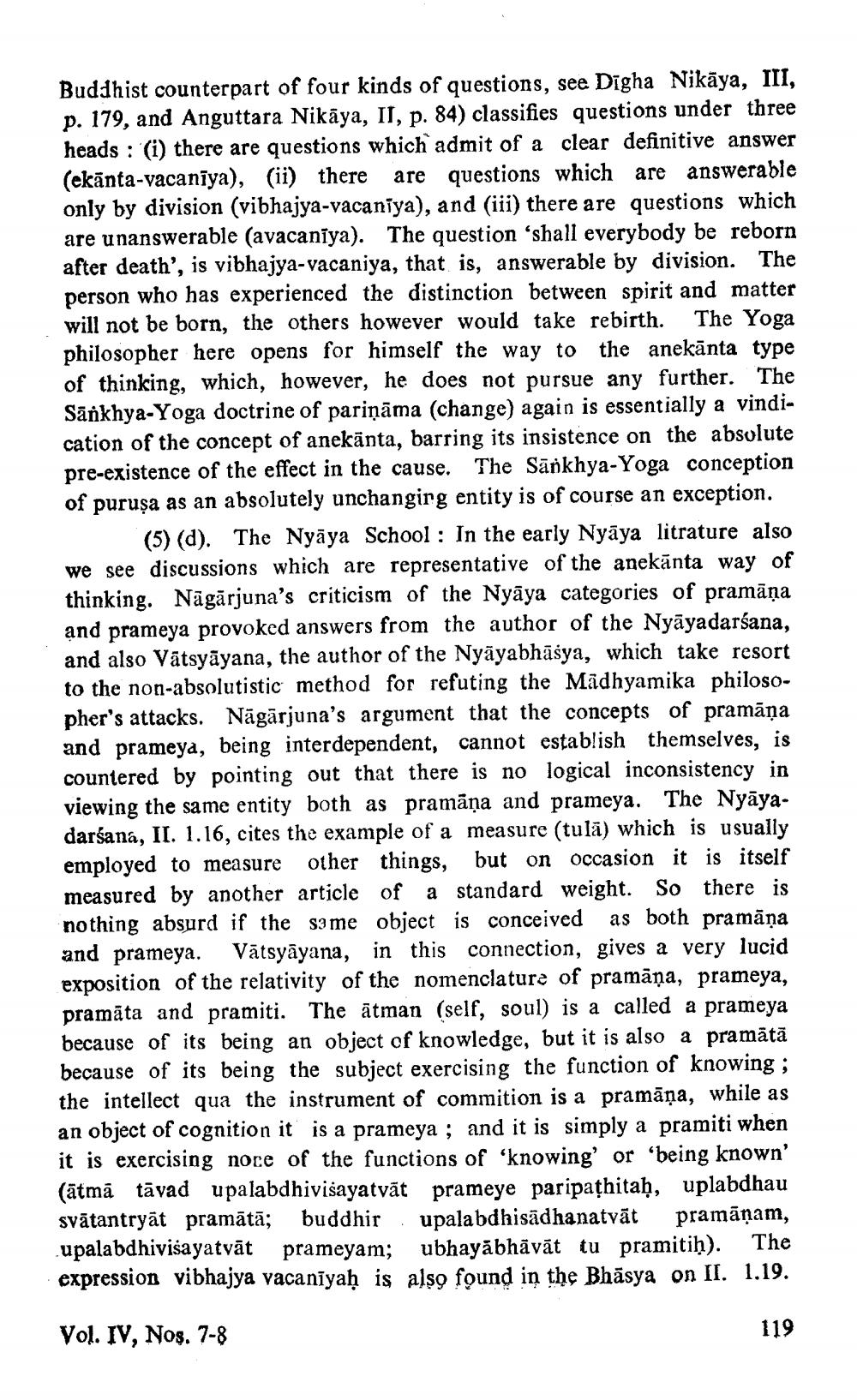________________
Buddhist counterpart of four kinds of questions, see Digha Nikaya, III, p. 179, and Anguttara Nikaya, II, p. 84) classifies questions under three heads: (i) there are questions which admit of a clear definitive answer (ekānta-vacanīya), (ii) there are questions which are answerable only by division (vibhajya-vacaniya), and (iii) there are questions which are unanswerable (avacaniya). The question 'shall everybody be reborn after death', is vibhajya-vacaniya, that is, answerable by division. The person who has experienced the distinction between spirit and matter will not be born, the others however would take rebirth. The Yoga philosopher here opens for himself the way to the anekānta type of thinking, which, however, he does not pursue any further. The Sankhya-Yoga doctrine of pariņāma (change) again is essentially a vindication of the concept of anekanta, barring its insistence on the absolute pre-existence of the effect in the cause. The Sankhya-Yoga conception of purusa as an absolutely unchanging entity is of course an exception.
(5) (d). The Nyaya School: In the early Nyaya litrature also we see discussions which are representative of the anekanta way of thinking. Nagarjuna's criticism of the Nyaya categories of pramāņa and prameya provoked answers from the author of the Nyāyadarśana, and also Vätsyāyana, the author of the Nyayabhāsya, which take resort to the non-absolutistic method for refuting the Madhyamika philosopher's attacks. Nāgarjuna's argument that the concepts of pramāṇa and prameya, being interdependent, cannot establish themselves, is countered by pointing out that there is no logical inconsistency in viewing the same entity both as pramāņa and prameya. The Nyayadarśana, II. 1.16, cites the example of a measure (tula) which is usually employed to measure other things, but on occasion it is itself measured by another article of a standard weight. So there is nothing absurd if the same object is conceived as both pramāṇa and prameya. Vätsyāyana, in this connection, gives a very lucid exposition of the relativity of the nomenclature of pramāņa, prameya, pramāta and pramiti. The atman (self, soul) is a called a prameya because of its being an object of knowledge, but it is also a pramātā because of its being the subject exercising the function of knowing; the intellect qua the instrument of commition is a pramāņa, while as an object of cognition it is a prameya; and it is simply a pramiti when it is exercising nore of the functions of 'knowing' or 'being known' (ātmā tāvad upalabdhivisayatvāt prameye paripathitaḥ, uplabdhau svätantryāt pramātā; buddhir upalabdhisādhanatvät pramāṇam, upalabdhiviśayatvāt prameyam; ubhayābhāvāt tu pramitiḥ). expression vibhajya vacanīyaḥ is also found in the Bhasya on II. 1.19.
The
Vol. IV, Nos. 7-8
119




